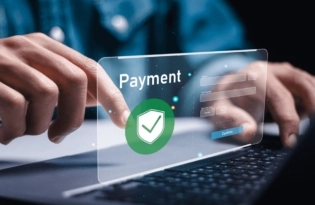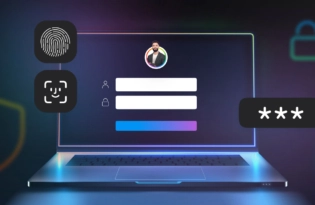Everything you need to know about online payment services
Online payment terminology There are several terms that are used almost interchangeably when describing online payments: Payment gateway: A service that receives the online payment request from your website and directs it to the payment processor. Payment processor: A service that enables Merchants to receive debit or Credit Card payments online by providing a connection to…
Online payment terminology
There are several terms that are used almost interchangeably when describing online payments:
Payment gateway: A service that receives the online payment request from your website and directs it to the payment processor.
Payment processor: A service that enables Merchants to receive debit or Credit Card payments online by providing a connection to an Acquiring Bank. These processors perform many functions such as evaluating whether transactions are valid and approved. If the customer has sufficient funds, the transaction is authorized, the funds are transferred from the customer’s account, and your website is notified.
Payment provider: A payment provider (or payment service provider) is the company that operates the payment gateway or payment processor services. In some cases, the payment gateway and payment processor are combined into a single service known by either name.
Payment service or payment system: Where a payment provider offers multiple types of payment gateways – with different features and pricing – each type is referred to as a payment service or payment system. For example, Payoneer is a payment service provider that offers a number of payment services such as US Payment Service and Withdraw to Bank Service.
Merchant account: When an online transaction is successfully completed, the funds are transferred from the purchaser’s account to your merchant account, a special kind of bank account used exclusively to hold funds received from credit and debit card transactions. To accept online payments, you usually need to set up a merchant account with your payment provider. Funds accumulating in your merchant account are transferred to your organization’s bank account on a regular basis.
Getting started with online payments
- A merchant account, though some payment systems do not require a merchant account or can provide you with one
- An account with a payment service provider
- A web page with a call to action button, which initiates the transaction process (Join, Donate, Buy)
The transaction process
Once you’ve set up your web page and connected it to an online payment service, visitors to your site will be able to pay online for products or services. The online payment process begins when the visitor clicks the button to purchase something from your website/ online store. The visitor enters their credit card information then submits the transaction request.
The Merchant Bank’s Processor submits the transaction to the credit card network (like Visa or Mastercard). The credit card network routes the transaction to the bank that issued the credit card to the customer. The issuing bank approves or declines the transaction based on the customer’s available funds and passes the transaction results back to the credit card network.The credit card network relays the transaction results to the merchant bank’s processor. The processor relays the transaction results to Authorize.Net.
The transaction request, along with the credit card information, is securely transmitted to the payment gateway operated by your payment service provider. No one – including you – can view the purchaser’s personal and financial information.
Your payment service provider will verify the purchaser’s credit card details and confirm whether the purchaser has sufficient funds to complete the transaction.If the purchaser’s credentials are valid and there are sufficient funds, your payment service provider will transfer funds from the purchaser’s bank account to the merchant account associated with your website, and notify your website that the transaction has been approved. If the transaction is declined, no funds will be transferred and you will be notified.
Factors to consider when choosing a payment processor
Do they support organizations located in your country?
Do they support the currencies you want to accept?
What volume of transactions do you expect on your website?
Are payments processed on your website or theirs? Do you care?
What kind of payments do they accept – credit card, debit card, PayPal?
Do they support recurring payments?
What kind of fees do they charge?
- application fee
- setup fee
- monthly fee
- discount rate
- per-transaction fee
- statement fee
- monthly minimums
- non-qualified fees
- cross-border fees
- gateway fee
- minimum term contracts that you cannot cancel without penalties
- chargebacks
- rolling reserves.
A few payment processors to consider
Related resources
Latest articles
-
How to simplify payment operations with Payoneer’s automation feature
Save time, reduce costs, and eliminate errors with Payoneer’s new payment automation feature.
-
How to prevent online payment fraud as an SMB
Prevent online payment fraud by overcoming challenges like phishing, fake accounts, and account takeovers (ATO) with enhanced security features from Payoneer.
-
Amazon Fees & Policy Updates 2024
Amazon regularly makes planned updates to fees and policies that may impact Payoneer customers that sell on Amazon. To keep Payoneer customers informed regarding upcoming and past updates, we’re providing a list of known changes to Amazon fees and Policy updates.
-
How Payoneer’s target exchange rate feature will help you save more on bank withdrawals
Boost savings with Payoneer’s target exchange rate feature.
-
Navigating phishing attacks: A guide to keeping your Payoneer account secure
Keeping your funds safe is our number one priority at Payoneer. While phishing attempts can happen, arming yourself with knowledge is key to keeping your data and money safe
-
Zoho Books and Payoneer integration guide
Learn how to seamlessly integrate Payoneer with Zoho Books. Follow our step-by-step guide to connect your accounts, create invoices, and manage payments efficiently. Optimize your financial operations today!














